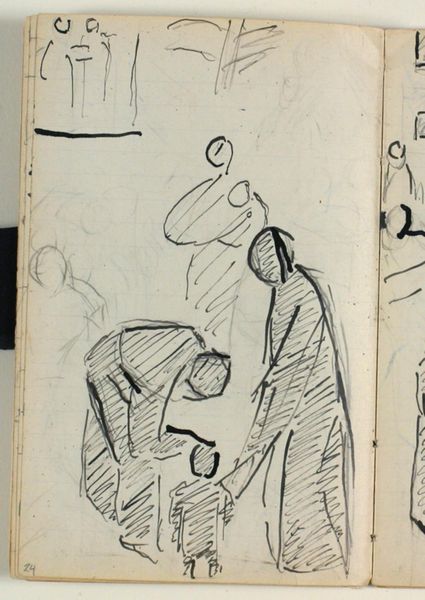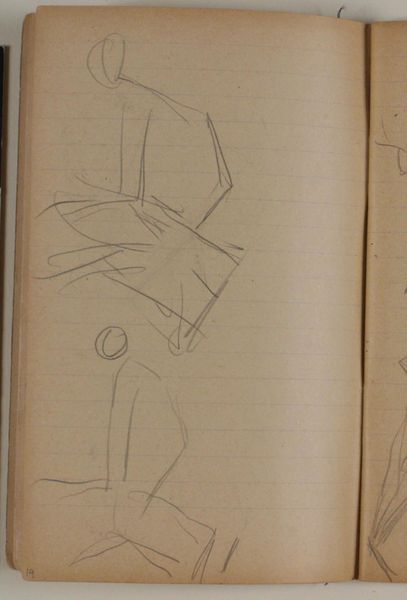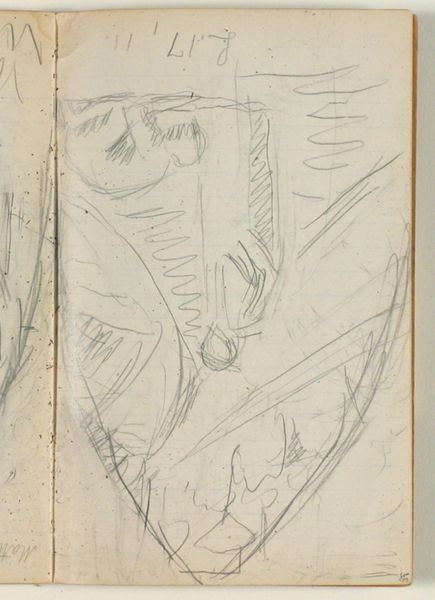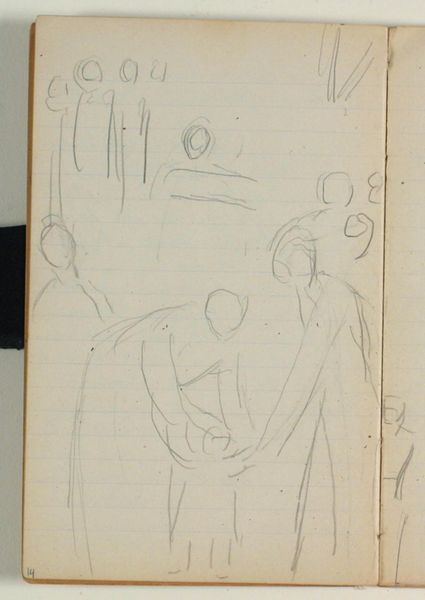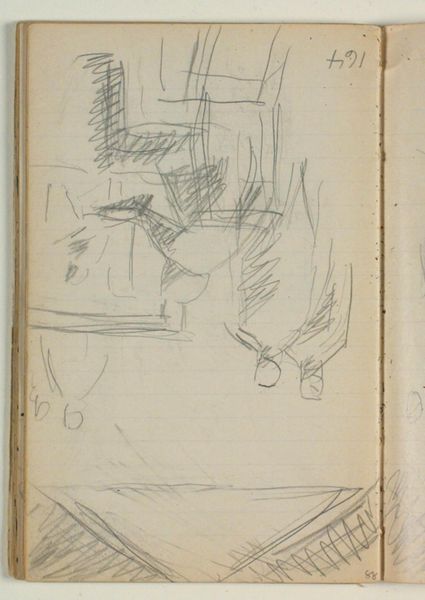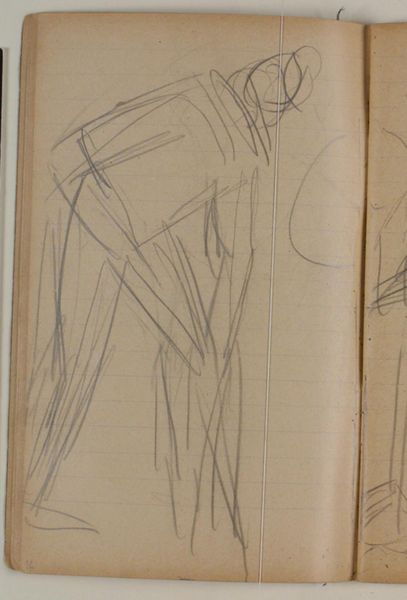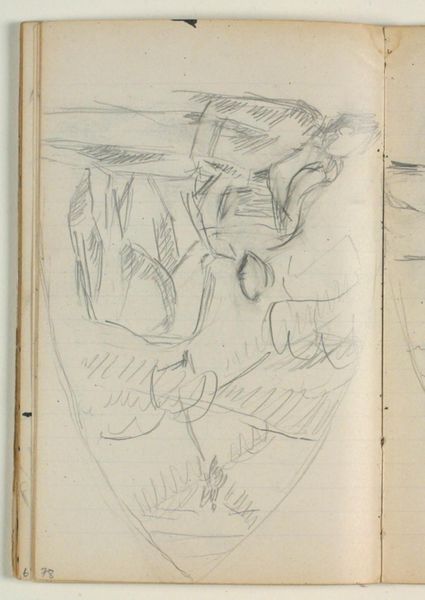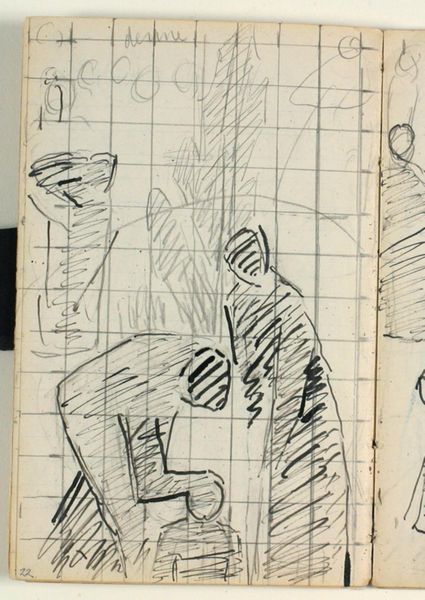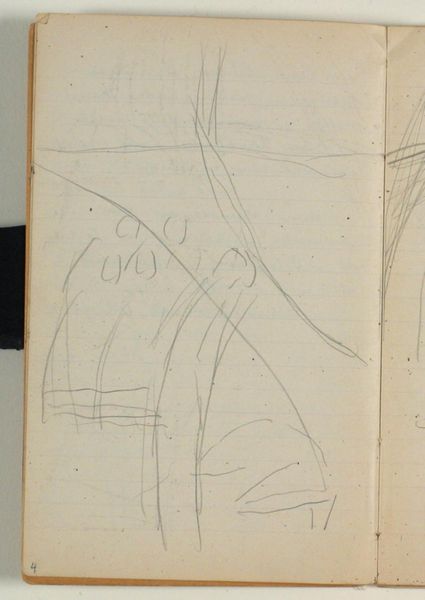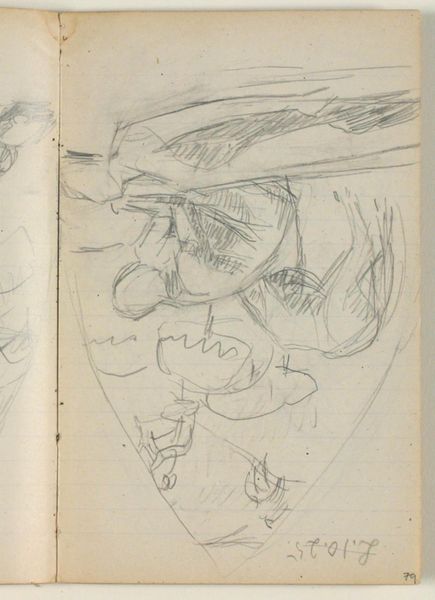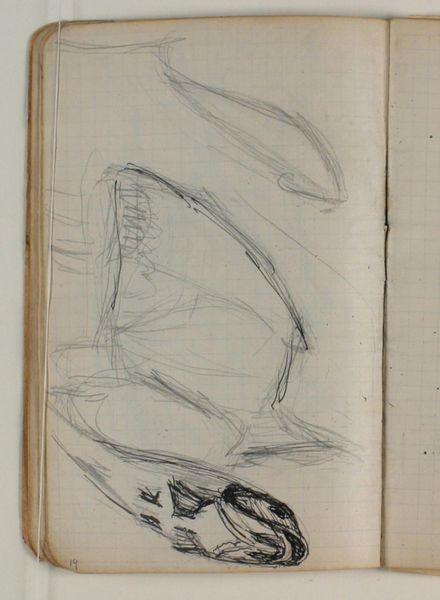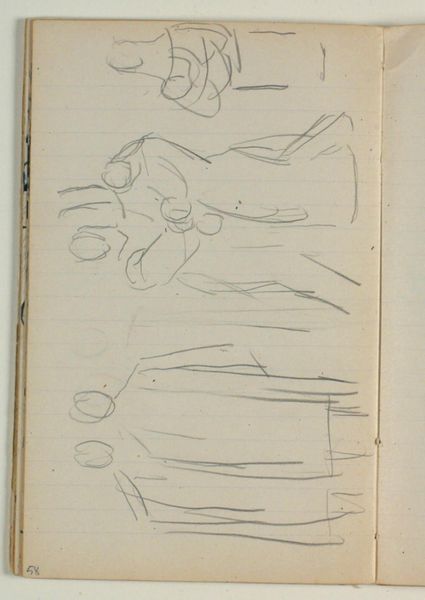
Udkast til "Kristus velsigner de små børn" 1937 - 1938
0:00
0:00
drawing
#
drawing
#
aged paper
#
toned paper
#
light pencil work
#
sketch book
#
hand drawn type
#
personal sketchbook
#
sketchbook drawing
#
watercolour illustration
#
sketchbook art
#
watercolor
Dimensions: 178 mm (height) x 111 mm (width) x 5 mm (depth) (monteringsmaal), 178 mm (height) x 111 mm (width) (bladmaal)
Curator: We are looking at "Udkast til \"Kristus velsigner de små børn\"", or "Study for Christ Blessing the Little Children," by Niels Larsen Stevns, created sometime between 1937 and 1938. It appears to be a drawing, probably in a sketchbook. Editor: My first impression is one of fleeting observation. The lines are so light, almost ethereal. There is a sense of intimacy, a glimpse into a private moment. The artist seems to be searching for the essential form. Curator: Exactly. Stevns is concerned with structure and the placement of the figures in the composition, right down to their relative proportion to the sketched rendering of a tree. It is not so much about literal representation, but an exploration of form and relationship. Look at the way he repeats and simplifies shapes, circles and rectangles. Editor: Placing this drawing within its socio-political context reveals a time when religious subjects in art were undergoing reconsideration. Perhaps this sketch is a preliminary exploration of these ideas? It seems Larsen is stripping down Christian narratives to their emotional core. Curator: And what is that core? What is communicated, stripped bare? Consider the gestural quality of those repeated, overlapping lines forming the mother figures. This imbues the scene with tenderness despite its simplicity. Editor: But is it about faith, or is it about societal structure, families, and maternity itself? We must consider the period between the wars. Did social upheaval perhaps impact this interpretation of Christ with children? Is Stevns saying something about community? Curator: Interesting… The linear composition indeed conveys certain structures within relationships, while the figures leaning forward and tilting downward draw us back into an intuitive relationship within those social architectures. Editor: Looking at this preliminary study now, it appears the emotional complexity grows from precisely this interaction between faith, doubt, societal need, and the tenderness suggested by line and shape. I initially saw only an informal collection of strokes, but I now discern Stevns in relation to the climate of his time. Curator: Yes, it offers an opportunity to experience the nascent beginnings of an image where those historical elements intersect with the development of forms in a composition that only begins with faith.
Comments
No comments
Be the first to comment and join the conversation on the ultimate creative platform.
